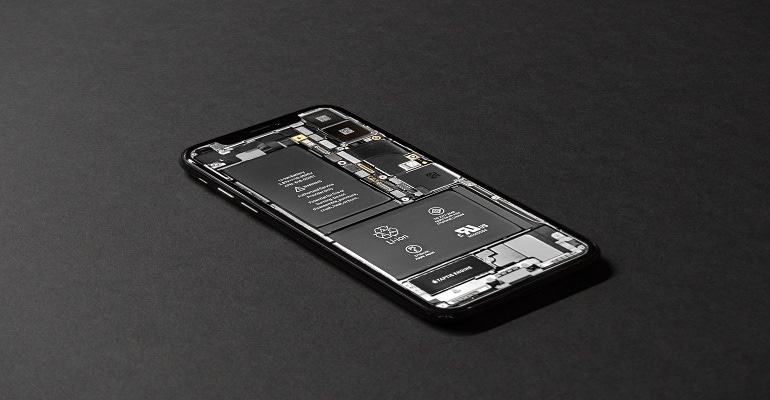Analyzing the battery problem from inside electrodes provides new insight for future designs.
October 1, 2020

To achieve safer battery designs in the future, researchers have gone inside lithium-ion battery electrodes to discover more about how needle-like structures called dendrites, which can cause catastrophic failures, form.
A team of scientists at Okayama University led by Associate Professor Kazuma Gotoh tracked lithium ions not only on the surface of electrodes but also inside the electrode itself to observe the states of charging and discharging.
To do this, researchers used solid-state nuclear magnetic resonance (SSNMR) to observe both the overlithiation and oversodiation processes of graphite and hard carbon electrodes in real-time, Kazuma told Design News.
The formation of dendrites on the negative electrode of lithium-ion batteries can penetrate the barrier between the negative and positive electrodes, causing a short circuit that can lead to the battery catching fire or exploding.
Because of this, researchers have been taking a hard look at how these structures form so they can create battery designs that won’t face the same problem.
Novel Approach
This approach to examining this phenomenon that Kazuma’s team took is different than some of the techniques other scientists have used to study dendrite formation in electrodes, he said.
“Lithium NMR can observe not only lithium atoms on the surface of electrode materials but also lithium atoms adsorbed in the inner pores of electrode materials,” Kazuma told Design News. “That is one of the large advantages comparing with the other analysis methods.”
Some of those methods, such as electron microscopes or X-ray analyses, can examine lithium dendrites in detail; however, scientists can observe only a part of the lithium atoms on the surface of the electrode, he said.
The NMR analysis that researchers performed them to track exactly when dendrites began to form as well as the deposition of lithium in the overcharged battery both for the graphite and carbon electrons.
Peak fittings of the signal intensities of lithium dendrite components in the NMR allowed researchers to estimate with fair accuracy the onset times of lithium dendrite deposition on the surface of the graphite and hard carbon electrodes during overlithiation or overcharging.
Analyzing Results
What they discovered by these observations is that lithium dendrites form in the graphite electrode soon after it is "fully lithiated.” In contrast, dendrites form in the hard carbon electrode only after "quasimetallic" lithium clusters occur in the pores of hard carbon.
Thus, when the battery is overcharged, the quasimetallic lithium cluster formation acts as a buffer for the formation of dendrites in hard carbon electrodes, Kazuma said.
“Closed pores in hard carbon are useful not only for increasing the capacity of the negative electrode but also for serving as a buffer for metal plating that occurs because of accidental overcharging of [lithium-ion and sodium-ion batteries],” he told Design News.
To test that their results are accurate, the team even applied the same analysis to another type of rechargeable battery, a sodium-ion battery, and came up with similar results, he said.
Researchers published a paper on their work in the Journal of Materials Chemistry A.
The research should allow battery designs and companies producing the devices to “choose safer materials” in the future to avoid any potential for danger, something that already is in process, Kazuma told us.
Researchers plan to continue their work to apply their analysis to different kinds of batteries to gain more insight into which materials are safest, as well as evaluate used batteries for efficient use of resources, he added.
Elizabeth Montalbano is a freelance writer who has written about technology and culture for more than 20 years. She has lived and worked as a professional journalist in Phoenix, San Francisco, and New York City. In her free time, she enjoys surfing, traveling, music, yoga, and cooking. She currently resides in a village on the southwest coast of Portugal.
About the Author(s)
You May Also Like



